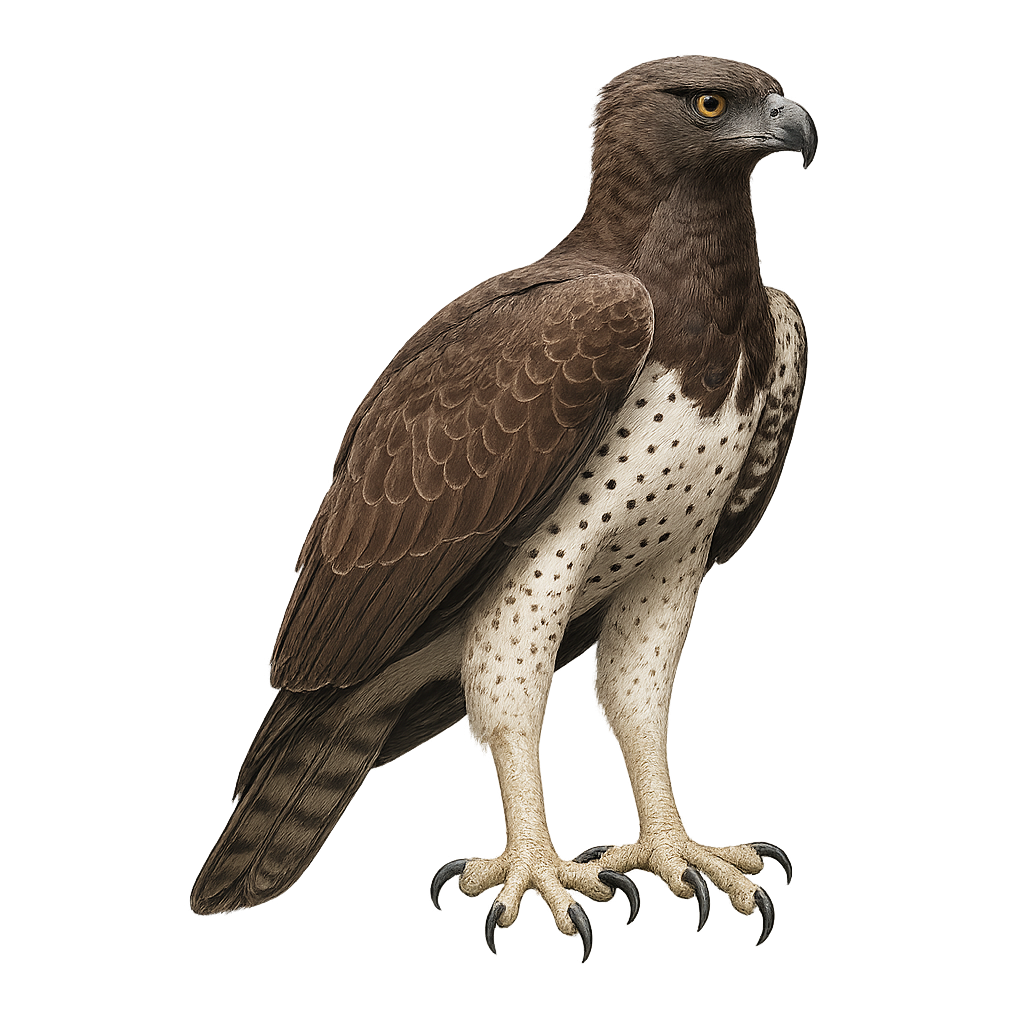Your wildlife photography guide.
Explore the martial eagle in detail, study its behavior, prepare your shots.
Where to observe and photograph the martial eagle in the wild
Learn where and when to spot the martial eagle in the wild, how to identify the species based on distinctive features, and what natural environments it inhabits. The WildlifePhotographer app offers tailored photography tips that reflect the martial eagle’s behavior, helping you capture better wildlife images. Explore the full species profile for key information including description, habitat, active periods, and approach techniques.
Martial Eagle
Scientific name: Polemaetus bellicosus

IUCN Status: Vulnerable
Family: ACCIPITRIDAE
Group: Birds
Sensitivity to human approach: Shy
Minimum approach distance: 50 m
Courtship display: April to July
Incubation: 45-50 jours
Hatchings: May to September
Habitat:
Savannas, open grasslands, sparsely wooded areas
Activity period :
Primarily active during the day, with peak activity in the morning and late afternoon.
Identification and description:
The Martial Eagle, Polemaetus bellicosus, is one of Africa's largest eagles, renowned for its power and majesty. It features dark brown plumage on its back and wings, while its belly is white with dark spots. Its impressive wingspan can reach up to 2.6 meters, allowing it to soar effortlessly across African skies. A formidable predator, it primarily feeds on medium-sized mammals, birds, and occasionally reptiles. It prefers savannas, open grasslands, and sparsely wooded areas. Although its status is concerning due to habitat loss and human persecution, it remains a symbol of African wildlife.
Recommended lens:
400 mm – adjust based on distance, desired framing (portrait or habitat), and approach conditions.
Photography tips:
To photograph the Martial Eagle, it's essential to have a telephoto lens of at least 400mm to capture detailed images from a distance. Look for open areas where it is likely to hunt, such as savannas or grasslands. Be patient and discreet to avoid scaring it away. The best times to photograph it are early morning or late afternoon when the light is soft and golden. Use a tripod to stabilize your camera and adjust your settings for a fast shutter speed to freeze its majestic flight.
The WildlifePhotographer App is coming soon!
Be the first to explore the best nature spots, track rutting seasons, log your observations, and observe more wildlife.
Already 1 432 wildlife lovers subscribed worldwide

